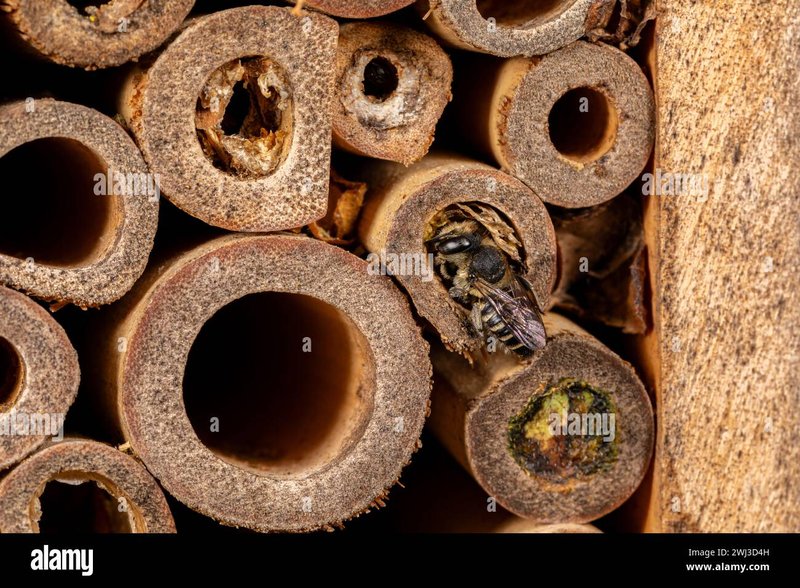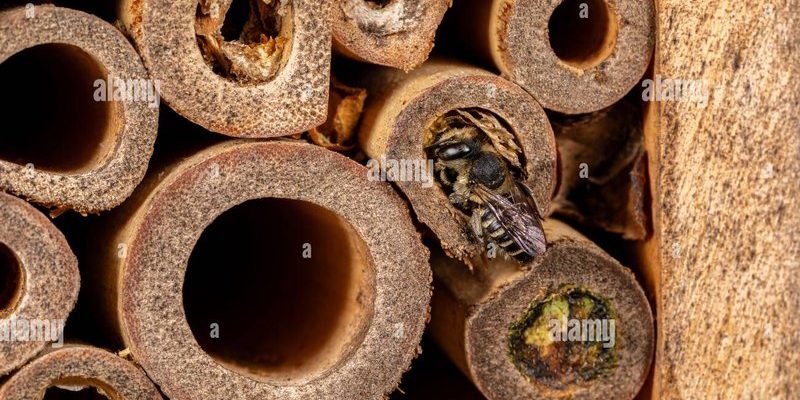
Leafcutter bees belong to the subfamily Megachilinae and are known for their unique method of building nests using cut leaves and petals. This behavior is pretty impressive, and it actually helps with pollination in gardens and wild plants. Understanding their habitat and nesting habits not only satisfies our curiosity but also highlights their importance in maintaining biodiversity. So, let’s dive into the world of leafcutter bees and explore where they live and how they create their cozy homes.
Where Do Leafcutter Bees Live?
Leafcutter bees can be found in a variety of habitats, but they tend to prefer areas with abundant flowering plants. This includes meadows, gardens, and even forest edges. Basically, they’re not picky as long as there are plenty of flowers around to munch on for nectar and pollen. You might spot them buzzing around roses, sunflowers, and clover, which are some of their favorites.
Most species of leafcutter bees are solitary, meaning they don’t live in large colonies like honeybees. Instead, you might find them living in small pockets where conditions are just right. They thrive in places that have a mix of sun and shade, as these environments often have the right plants for feeding and nesting.
Another interesting point is that many leafcutter bees choose to nest in existing cavities, like old wood, hollow stems, or even in the ground. This makes them quite adaptable. You might be wondering how they know where to find these perfect spots—well, they’re pretty good at scouting out their options!
Nesting Materials: What Do They Use?
Now, let’s get to the fascinating part: how they build their nests. Leafcutter bees are known for their unique approach to nest building, which involves cutting circles or oval shapes from leaves or petals. They prefer plants like roses and clover because these offer the right texture and thickness. It’s like choosing the perfect fabric for a cozy quilt!
Once they’ve snipped off their leafy pieces, they gather them and bring them back to their chosen nesting site. You might think this is a simple task, but it actually takes a lot of skill and precision. Honestly, these little bees are like mini construction workers, carefully crafting their nests by layering these pieces into a cozy environment.
Inside the nest, they create individual cells where they’ll lay their eggs. Each cell is lined with the cut leaves, forming a snug chamber for the growing bee larva. After laying an egg, they pack it with pollen and nectar—kind of like a packed lunch for their little one. The larva will feed on this food as it grows before finally emerging as a fully formed bee.
Types of Nesting Sites
Leafcutter bees are resourceful when it comes to finding nesting sites. They can use different types of locations depending on what’s available in their environment. Here are some of the most common nesting sites for leafcutter bees:
- Hollow Stems: Many bees find natural hollows in stems or twigs, which serve as great nesting spots. These can be found in gardens and wooded areas.
- Burrows in the Ground: Some species dig into the soil to create underground nests. They prefer sandy or loose soil that’s easy to excavate.
- Wooden Cavities: Old wood, like rotting logs or fences, often provides cozy holes for these bees to create their homes.
- Human-Made Structures: You might even find them nesting in bee hotels or wooden blocks set up in gardens. These artificial nesting sites mimic their natural habitats and are favored by many solitary bees.
The choice of nesting site affects their survival rate and the success of their offspring. A well-chosen location can provide protection from predators and harsh weather conditions.
Seasonal Behavior and Nesting Cycles
You might be surprised to discover that leafcutter bees have a distinct seasonal rhythm. They are most active during the warmer months when flowers are blooming, which means that their nesting behavior coincides with the availability of food. Typically, these bees emerge from their nests in spring and summer, just when you notice plants bursting with color.
Once they’ve found a suitable site, leafcutter bees start collecting materials. They cut leaves during the day and can carry multiple leaves at once. It’s quite a sight to see! After constructing their nests, females lay their eggs and seal each cell. At this point, they’re pretty much done with that nest for the season—there’s no return to the nest like you’d see with social bees.
The eggs will eventually hatch, and the larvae will grow over several weeks, feeding on the pollen and nectar packed alongside them. As fall approaches, the adult bees will complete their life cycle, and you might only see the empty nests left behind. The next generation will remain in these nests to overwinter until the cycle starts over in spring.
Why Habitat Matters for Leafcutter Bees
The habitat of leafcutter bees is crucial for their survival, and any changes to their environment can impact their population. Urbanization, pesticide use, and habitat destruction can pose significant threats. You might be wondering if there’s anything we can do to help. The good news is yes!
Here are some easy actions you can take to create a welcoming environment for these important pollinators:
- Plant Native Flowers: Choose flowering plants that bloom at different times throughout the season. This provides a consistent food source.
- Avoid Pesticides: Reduce or eliminate chemical use in your garden to create a safer habitat.
- Create Bee Hotels: Set up bee hotels filled with hollow stems or wooden blocks to give them a variety of nesting options.
- Leave Some Areas Wild: Allow patches of your yard to grow wild with native plants and flowers—this can attract various bee species.
By making small changes, you can help support leafcutter bees and ensure they thrive in their natural habitats.
In summary, leafcutter bees are incredible creatures with unique nesting behaviors that play a vital role in our ecosystems. From their choice of habitat to their fascinating building techniques, these solitary bees show us just how resilient and resourceful nature can be. By understanding their needs and supporting their habitats, we can help protect these essential pollinators for years to come. So next time you spot a tiny leafcutter bee buzzing by, remember the amazing journey it took to build its home!

